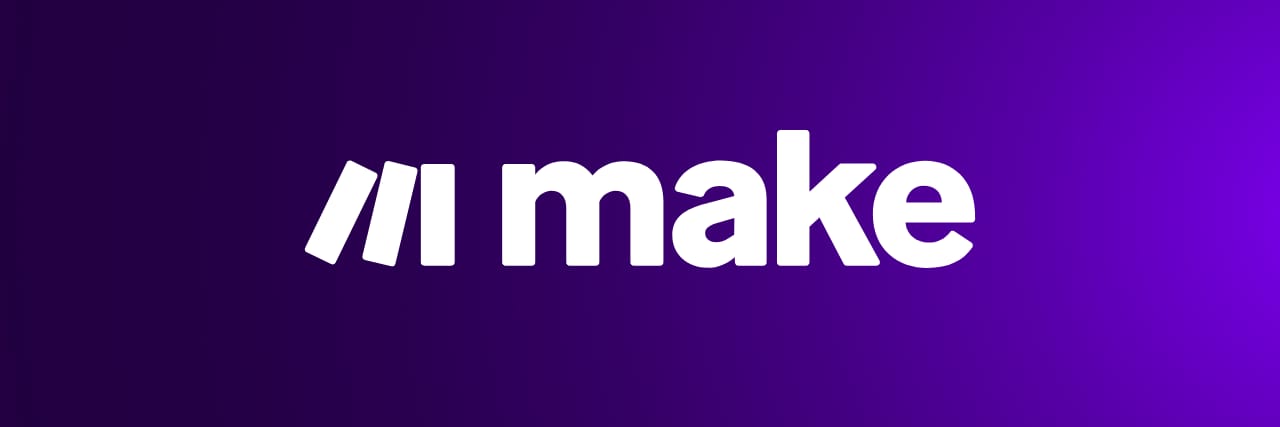Hi it’s Joshua, and welcome to the NCF Weekly newsletter where we share actionable guidance on building a business as a non-technical founder.
This week, we spoke with WeWeb CEO Raphael Goldsztejn about AI, their product roadmap and what makes WeWeb different.
Sponsored by

Make is the no-code, visual-first automation platform for businesses who want to create AI agents that manage processes intelligently.
With Make, automation becomes easier to design, monitor, and improve - supporting better decisions and stronger outcomes across your business.
Get started today to realize your business’s full potential. Use the button below to get 1 month of the Pro plan with 20,000 operations for free.
Get in front of 33k+ saas founders by sponsoring this newsletter
📕 Interview
WeWeb CEO - Raphael Goldsztejn

What can you build with WeWeb that you can't easily build with other no-code tools? What's WeWeb's superpower?
One of WeWeb’s biggest strengths is its scalability. You can start small with an MVP or internal tool, test it, and refine based on feedback. When you’re ready to grow, you don’t have to migrate to another platform and start over. WeWeb scales with you.
In fact, apps built with WeWeb range from simple client portals to large-scale systems serving millions of users.
Another key strength is that WeWeb is truly pixel perfect. The visual editor gives builders full control to design exactly what they want, down to the smallest detail. And for those who need extra flexibility, it’s easy to add custom-coded components.
We also see many teams turn to WeWeb for its flexibility with compliance, especially HIPAA. Builders in the health industry can connect to a HIPAA-compliant backend through our REST API plugin in dynamic mode. Since data never passes through our servers, the apps remain fully compliant.
Finally, we don't believe in locking people in. Our users can export their code or self-host their projects at any point. We want them to have full control.
How does WeWeb handle connecting to databases and APIs? What options do users have for managing their backend?
WeWeb has a plugin-first approach to the backend. It connects to anything with a REST, SOAP, or GraphQL API, so you can use almost any backend as long as it provides an API.
We also built native plugins with backends like Supabase and Xano to make the experience more fluid. Users can go beyond basic CRUD operations and build advanced logic, triggers, and workflows through an intuitive visual interface. The same is possible with our REST API plugin, it just requires a bit more setup.
And I am happy to share that we are building our own backend, planned for release in Q1 next year.
It will offer a better experience for users coming to WeWeb without an existing backend. And users with existing data sources like Airtable, Notion, Google Sheets, or any SQL database will be able to connect and secure them in one click through our integrated backend capabilities.
We’ll also offer full self-hosting options for both the backend and the frontend, which will make WeWeb the first full-stack visual IDE with no lock-in.
Stay tuned!
What are some of the most complex or impressive applications that have been built on WeWeb? What made them possible?
One example that stands out is La Poste, one of the largest organizations in France.
The director of their Digital Acceleration team reached out looking for a no-code frontend builder that would allow them to move fast, keep full code ownership, and comply with EU’s data standards.
Not long after, the French government mandated the creation of a national information system with a strict five-month deadline. It was quite the challenge, but their team pulled it off.
They combined their in-house backend, a white-label mobile app, and WeWeb for multiple frontends and delivered a public-facing platform that can serve millions of users in just four months.
Now, every new project from La Poste’s Digital Acceleration team that needs a frontend runs on WeWeb.
And for anyone curious, you can see more examples of what teams are building with WeWeb on our Showcase page.
How do you think about the balance between visual development and giving users access to code when they need it?
I think it’s a perfect combination, especially when it comes to scalability.
Most no-code tools can’t handle complex frontends or use cases without messy workarounds or duct taping.
That is where WeWeb stands out. It provides the right level of abstraction to keep the building experience accessible, while still offering full control through code. HTML, CSS, and JavaScript are visual, but users can still drop into code when necessary.
We applied the same principles to our AI capabilities. You can build with AI generation, refine visually when needed, and move into code for more complex features.
What are you most excited about in WeWeb's roadmap for the next 6-12 months?
As mentioned, we’re building our own backend to make it easier to create full stack apps without leaving WeWeb. It will work like an Airtable-style database and let users manage data, authentication, and other backend functions.
This new backend will also improve how users connect to external sources like Airtable or SQL databases. Connections will run through a secure backend automatically.
We are also working to make the AI experience full stack, so users can build end to end with AI as their assistant.
We are steadily catching up with other vibe coding tools, and it is only a matter of time before we offer comparable AI capabilities with one major advantage: full control through a visual IDE.
And of course, we continue to improve the experience and fix bugs based on the feedback we get from our users. It is ongoing work.
Can you explain how the AI app building feature works? What can someone actually create just from a prompt?
WeWeb AI works through natural language prompts. But what really sets it apart is the output and the level of control you keep.
Platforms like Bolt or Lovable generate only code. In WeWeb, the AI builds something you can immediately edit in a visual, drag-and-drop interface. If you want to adjust padding or tweak a layout, you just click and change it, with no need to rewrite prompts or touch code.
For now, the AI focuses mainly on building UIs rather than full-stack apps, as the backend context isn’t yet included. That will change very soon, and we expect it to be a major milestone!
After generating an app with AI, how easy is it to customize and iterate on what was created? Does it generate something you can truly own and modify?
Most AI app builders use chat-based interfaces where you keep prompting to generate or adjust your app. But even small changes can turn into endless back-and-forth, which quickly becomes frustrating.
What we've learned is that non-coders often feel stuck on these platforms. When the AI outputs a bunch of code or hallucinates, they can’t really understand what happened or how to fix it.
WeWeb takes a different approach. It combines AI speed with full visual control. You can refine, extend, or override anything the AI creates using the drag-and-drop editor, workflows, or code.
Of course, to build confidently, you still need to understand core web concepts like what a backend or frontend is, what variables and states are, and how to keep apps secure. That basic knowledge helps you prompt better and collaborate more effectively with the AI.
Learn to build your business with tools like WeWeb
Get full access to all our resources with Pro Membership for a one-time payment of $149 (Price increasing in 5 days).
Sneak peek at what’s included 👇
💰$50k in Perks
Access Exclusive offers from the top no-code tools who have partnered with us. Including $15k waived Stripe fees, $500 Bubble credit + $1000 Coda credit View all
💻 No-Code Operating System
Advanced Notion template that replaces all your productivity tools. Everything you need to launch and manage your business from one page. Learn more
🎓 Course: Tiny Empires Method
Learn how to build a 6-figure business that works around your life and not the other way around. Learn proven frameworks to stop wasting time and start making money. Learn more
🎓 Course: Sales for Introverts (and people who don’t like selling)
Learn how to sell in a way that fits your personality and delivers consistent, reliable revenue for your busines. Learn more
🛠️ 75+ Curated No-Code Courses and Resources
We’ve curated 2000 no-code videos into 75+ easy to navigate courses. Save yourself hours of watching Youtube videos that don’t move your knowledge forward. View all
*Price update in 5 days
